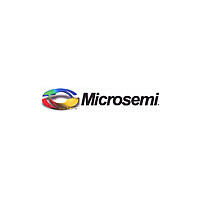A1460A-3PQ208C MICROSEMI, A1460A-3PQ208C Datasheet - Page 8

A1460A-3PQ208C
Manufacturer Part Number
A1460A-3PQ208C
Description
Manufacturer
MICROSEMI
Datasheet
1.A1460A-3PQ208C.pdf
(68 pages)
Specifications of A1460A-3PQ208C
Number Of Usable Gates
6000
Number Of Logic Blocks/elements
848
# Registers
768
# I/os (max)
167
Frequency (max)
200MHz
Process Technology
0.8um (CMOS)
Operating Supply Voltage (typ)
5V
Logic Cells
848
Device System Gates
15000
Propagation Delay Time
2ns
Operating Supply Voltage (min)
4.75V
Operating Supply Voltage (max)
5.25V
Operating Temp Range
0C to 70C
Operating Temperature Classification
Commercial
Mounting
Surface Mount
Pin Count
208
Package Type
PQFP
Lead Free Status / Rohs Status
Not Compliant
Available stocks
Company
Part Number
Manufacturer
Quantity
Price
The S-module contains a full implementation of the C-module
plus a clearable sequential element that can either
implement a latch or flip-flop function. The S-module can
therefore implement any function implemented by the
C-module. This allows complex combinatorial-sequential
functions to be implemented with no delay penalty. The
Designer Series Development System will automatically
combine any C-module macro driving an S-module macro into
the S-module, thereby freeing up a logic module and
eliminating a module delay.
The clear input CLR is accessible from the routing channel.
In addition, the clock input may be connected to one of three
clock networks: CLKA, CLKB, or HCLK. The C-module and
S-module functional descriptions are shown in Figures 2
and 3. The clock selection is determined by a multiplexor
select at the clock input to the S-module.
I/Os
I/O Modules
I/O modules provide an interface between the array and the
I/O Pad Drivers. I/O modules are located in the array and
access the routing channels in a similar fashion to logic
modules. The I/O module schematic is shown in Figure 4. The
signals DataIn and DataOut connect to the I/O pad driver.
Each I/O module contains two D-type flip-flops. Each flip-flop
is connected to the dedicated I/O clock (IOCLK). Each
flip-flop can be bypassed by nonsequential I/Os. In addition,
each flip-flop contains a data enable input that can be
accessed from the routing channels (ODE and IDE). The
asynchronous preset/clear input is driven by the dedicated
Figure 3 • S-Module Diagram
1-182
D10
D11
D00
D01
A1 B1
S1
A0 B0
S0
Y
CLK
Figure 2 • C-Module Diagram
preset/clear network (IOPCL). Either preset or clear can be
selected individually on an I/O module by I/O module basis.
The I/O module output Y is used to bring Pad signals into the
array or to feed the output register back into the array. This
allows the output register to be used in high-speed state
machine applications. Side I/O modules have a dedicated
output segment for Y extending into the routing channels
above and below (similar to logic modules). Top/Bottom I/O
modules have no dedicated output segment. Signals coming
into the chip from the top or bottom are routed using F-fuses
and LVTs (F-fuses and LVTs are explained in detail in the
routing section).
D
CLR
Q
D10
D00
D01
A1 B1
D11
S1
OUT
A0 B0
S0
Y
OUT















